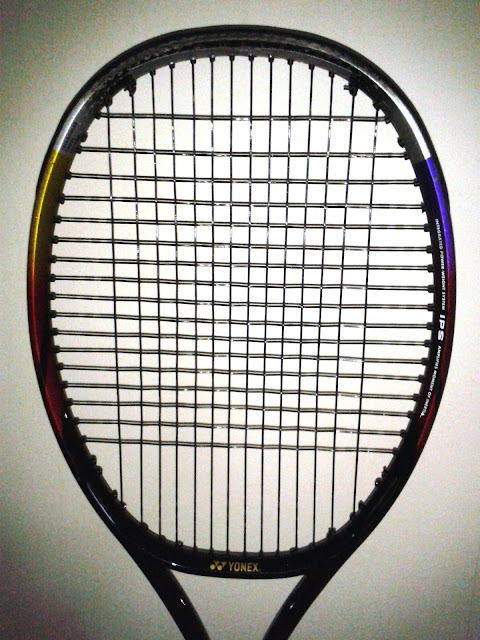When I found out that the racket was last strung about 3 months ago, I cut the strings immediately. Very few poly strings can last 8 hours of playtime. Even when strung and unused, poly can lose its playability in as little as two or three weeks. My thoughts were, since I have new strings and a machine, why risk any discomfort?
To me, multi strings are the safest bet. It is soft, comfortable and quite durable compared to most polys. Naturally, multi is my preferred string when testing rackets since I am familiar with how that string performs. Below pic shows the main strings completed.
18 by 20 in a 95 sq inch means a much denser stringbed compared to 16 by 18. Although the tension is "only" 52/54 lbs, this stringbed stiffness (~38 kg/cm) is the stiffest that I am going to try since I re-started playing tennis.
- the dense stringbed provides exceptionally good ball control
- at 52/54 lbs, I could do full swings without fear of hitting it long
- surprisingly, it is not difficult to generate spin at all
- the full multi bed is very soft, comfortable and yet crisp
- i could not feel any tension drop after an hour of hard hitting
- i enjoy this thin-beamed 95 sq in more than the 100 sq in 500 Tour
- this racket plays and feels very similar to my PSC6.1
- my friend that tested this said it feels like the Dunlop 200G
- overall I like this heavier 95 sq in much more than the 500 Tour


















































